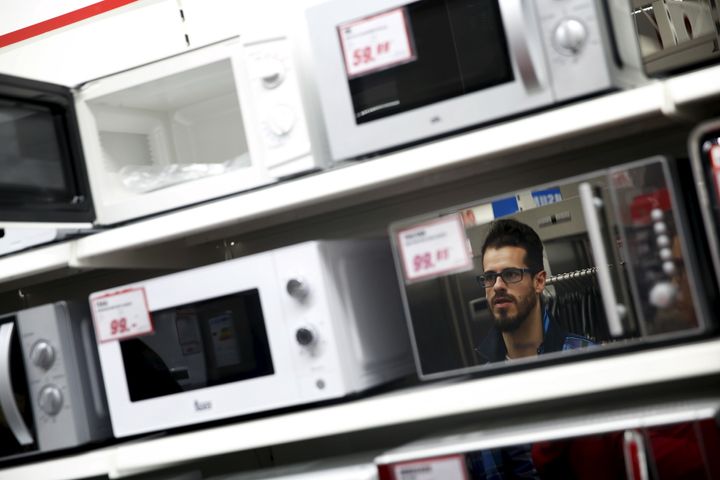Microwave usage across the EU produces as much carbon dioxide as almost 7 million cars, according to a report by the University of Manchester.
Microwave ovens have always traditionally felt like a quicker, cheaper and more economically friendly way to heat your food but the report highlights some shocking home truths.

Among those is the revelation that in addition to the CO2 produced, our combined use across the EU requires a staggering 9.4 terawatts per hour (TWh) of electricity every single year. That’s the equivalent output of three large gas power plants.
Now before you swear never to microwave anything ever again it’s important to note that the report doesn’t just look at your ownership of the microwave oven.
Instead the study is a life cycle assessment (LCA), taking into account the manufacturing of the microwave, time spent being used and then how it is disposed of.
The team found that some of the worst ‘hotspots’ for the environment were not incurred during our ownership of the microwave but actually in the before and after - manufacturing and end-of-life waste processing.

The manufacturing process alone contributes a whopping 20% to the depletion of natural resources and climate change.
By far and away the largest impact on the environment however is caused by electricity consumption.
It’s important to note that microwaves do require the least amount of electricity to operate, with a hob coming in second and an oven coming last.
It is however the electricity used throughout its entire life that contributes to its huge energy footprint.
How much energy do kitchen appliances use?
- Microwave - 600-1500W
- Hob - 1000-2000W
- Oven - 2000-2200W
- Toaster - 800-1500W
Credit: Centre for Sustainable Energy
With an average lifespan of just eight years, the study’s authors found that a single microwave (from production to being disposed of) will use the same amount of electricity as a 7 watt light bulb being left on continuously for nine years.
Perhaps the most serious problem surrounding the findings however was the insight into how we often we feel the need to replace white goods, even when the previous item worked perfectly.
““The purpose of the study was not to demonise microwaves at all. Microwaves are really efficient.””
- Dr Alejandro Gallego Schmid
“Consumers now tend to buy new appliances before the existing ones reach the end of their useful life as electronic goods have become fashionable and ‘status’ items.” explains study co-author Dr Alejandro Gallego Schmid.
“As a result,” he says. “Discarded electrical equipment, such as microwaves, is one of the fastest growing waste streams worldwide.’
Due to their low cost to produce, and relatively low upfront cost, microwave ovens are by far and away the most popular form of oven in Europe.
Despite the gloomy outlook, Dr Schmid says that this was never intended to be an attack on our use of microwaves
“The purpose of the study was not to demonise microwaves at all. Microwaves are really efficient.” he explains.
“But we have to consider the effect that they have at the level of the EU because we are sometimes not aware of the impacts of a household device.”
2005, across the EU, 184,000 tonnes of EE waste was generated from discarded microwaves. By 2025 this is estimated to rise to 195,000 tonnes, or 16 million individual units being sent for disposal.
So what can we do to make a difference? Well Dr Schmid believes that turning microwaves off when we’re not using them can help while the overall decarbonisation of the electricity that’s coming into our homes will also help.
While that might not seem like much Dr Schmid says that these simple changes can have “small repercussions for one microwave, but important benefits at EU level.”
